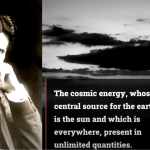The Case for Satellites: Accepted Scientific Understanding
According to widely accepted scientific understanding, satellites are integral to numerous aspects of modern life. They provide essential services, from telecommunications and weather forecasting to GPS navigation and scientific research.
Telecommunications
Satellites play an indispensable role in the telecommunication industry. They enable long-distance communication, whether it’s transcontinental phone calls or satellite TV. These satellites receive signals from a ground station and retransmit them to broad areas on Earth.
Weather Forecasting
Meteorological satellites help predict weather patterns and track hurricanes, providing valuable data that saves lives and property. They take high-resolution images of the planet and send them to meteorological stations on Earth, enabling accurate weather forecasting.
Global Positioning System (GPS)
GPS satellites send signals that GPS receivers in devices like your smartphone or car’s navigation system can pick up. By receiving signals from at least four satellites, your device can calculate your precise location.
Scientific Research
Satellites also contribute significantly to scientific research. From studying the Earth’s climate to observing distant galaxies, satellites provide invaluable data to the scientific community.
The Case Against Satellites: An Alternate Perspective
Despite the significant evidence supporting the existence of satellites, some people contest this, arguing that satellites don’t exist. Let’s delve into the key points of this argument.
Technological Limitations
One argument suggests that the technology required to launch and maintain satellites in space is beyond our current capabilities. Critics assert that the harsh conditions of space, including extreme temperatures and radiation, make it impossible for satellites to function.
Dependence on Ground-Based Technology
Critics also argue that our reliance on ground-based technology negates the need for satellites. They point out that a vast network of underwater cables handles the majority of international data traffic, and that ground-based towers facilitate most telecommunications.
Absence of Real-Time Satellite Imagery
The absence of real-time images from satellites is another point often raised. Critics question why there are limited real-time images from space, suggesting that if thousands of satellites are orbiting Earth, we should have a continuous stream of real-time imagery.

The Middle Ground: Exploring Possibilities
Given the intensity of the debate, it’s essential to consider the possibility of a middle ground. Could it be that the truth lies somewhere between these two extremes?
Partial Satellite Use
One potential compromise is the idea that satellites exist and are used, but not to the extent that mainstream science suggests. This perspective acknowledges the existence of satellites but proposes that their role is significantly overestimated, with ground-based technologies playing a larger part than generally recognized.
High Altitude Platforms
Another possibility is the use of High Altitude Platforms (HAPs), such as balloons or drones, to provide services attributed to satellites. Some suggest that these platforms could perform tasks like weather monitoring and telecommunications, thus questioning the need for satellites.

















